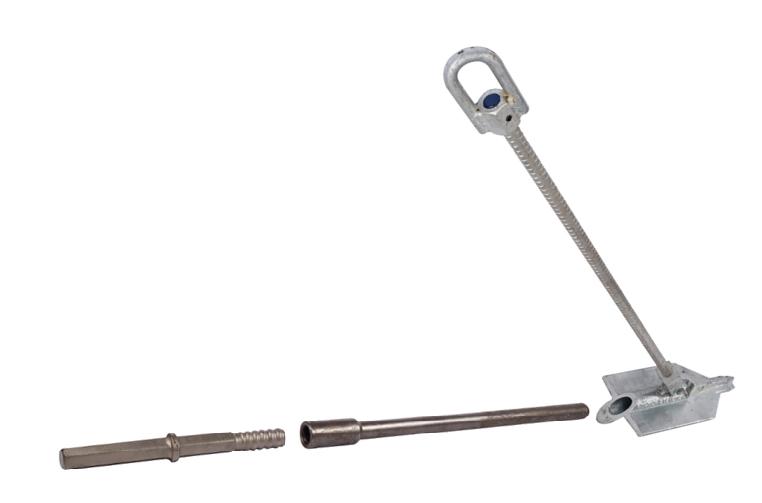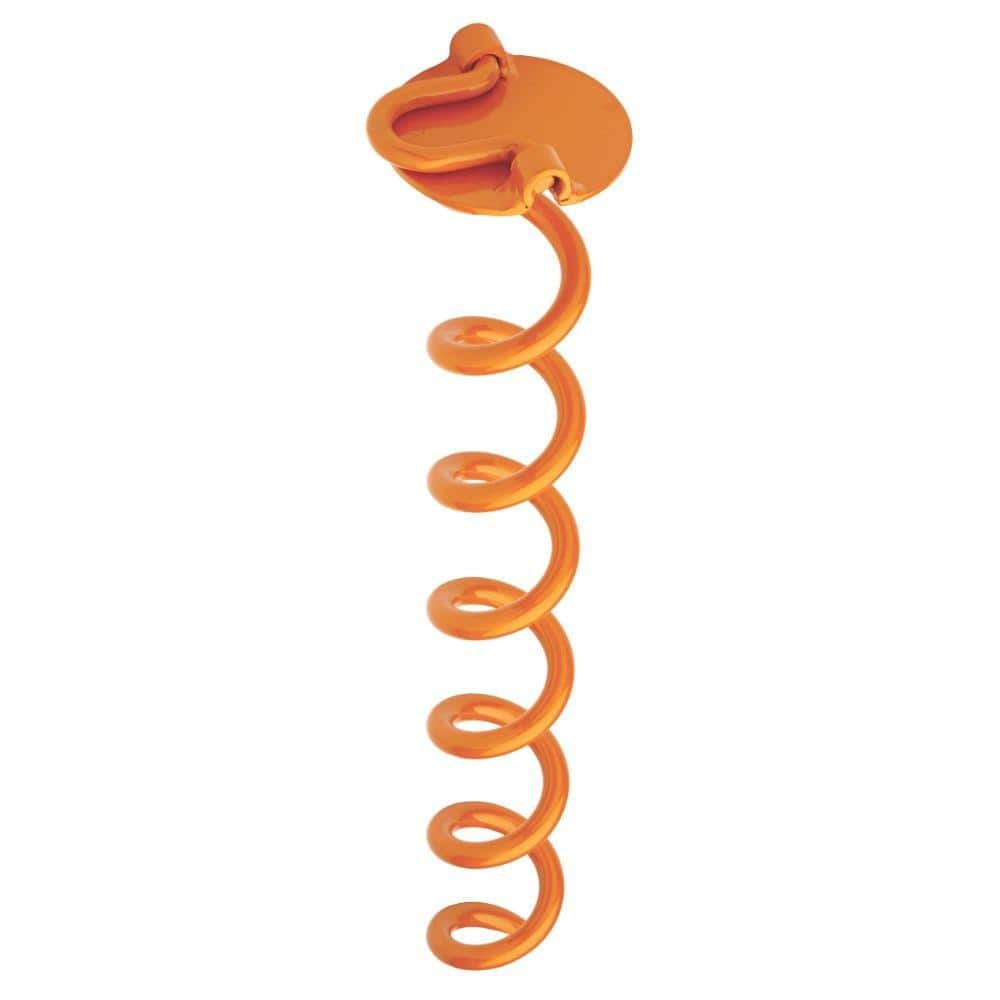Just How Heavy-Duty Earth Anchors Job: A Comprehensive Guide to Dirt Anchoring Solutions
Durable Earth supports play a crucial role in giving stability and support in numerous building and construction applications. By embedding deeply into the ground, they resist vertical and side forces properly. Different kinds of supports accommodate numerous dirt conditions, making them functional. Comprehending their auto mechanics and setup techniques is essential for making the most of performance. What factors affect their efficiency, and how do they compare to traditional techniques? The answers may stun you.
Comprehending Heavy-Duty Earth Anchors
Sturdy Earth anchors act as important parts in numerous construction and landscape design projects, giving stability and support in difficult soil problems. These supports function by being embedded right into the ground, where they stand up to side and vertical forces. Their design permits safe add-on to frameworks, ensuring they remain anchored against dirt movement or external loads.The efficiency of sturdy Earth anchors mostly depends on the type of dirt and the support's installment depth. Proper installment techniques are vital, as they figure out the anchor's holding ability. Environmental elements, such as wetness and freeze-thaw cycles, can likewise affect performance.These supports are often utilized in applications varying from securing fencings and retaining walls to stabilizing short-term structures during unfavorable climate condition. Comprehending the concepts behind sturdy Earth anchors is crucial for professionals looking for to enhance the durability and safety of their projects.
Sorts Of Heavy-Duty Earth Anchors
Numerous kinds of durable Earth supports are designed to satisfy certain requirements based on dirt conditions and project demands. Helical anchors, featuring screw-like blades, work in softer dirts, supplying high lots capacities and very easy installation. Driven supports, which are hammered right into the ground, appropriate for rocky surfaces and supply immediate lots support. Tie-back anchors are frequently used in preserving wall applications, permitting for lateral assistance by anchoring right into the ground at an angle. One more type is the cast-in-place support, ideal for concrete applications, as they are incorporated into structures for boosted security. Lastly, dirt screw anchors are flexible choices that can be made use of in different soil types, offering trusted stress and compression capabilities. Each kind serves distinct applications, ensuring security and security in construction and landscape design jobs. Comprehending these alternatives permits notified decisions in choosing the appropriate Earth securing remedy.
The Mechanics of Dirt Anchoring

Understanding the auto mechanics of dirt anchoring calls for an examination of various sorts of Earth supports and their setup strategies. Each support type provides one-of-a-kind qualities that influence its efficiency in various dirt problems. Appropriate installment methods are essential for maximizing the anchoring system's stability and efficiency.
Sorts Of Earth Anchors
Earth supports, crucial components in soil anchoring systems, can be found in several kinds, each created for particular applications and soil problems. One of the most typical types consist of screw anchors, which are turned right into the ground, offering solid side resistance. Helical anchors feature blades that allow for reliable installation in different soil types, making them appropriate for both long-term and short-term applications. Driven supports, usually made from steel, are inculcated the dirt and work in rough or dense environments. Auger anchors make use of a helical style to assist in installation in softer dirts. Lastly, plate anchors are composed of a flat plate hidden horizontally, dispersing lots over a larger location, suitable for applications calling for high lots capabilities in cohesive dirts.
Installment Techniques Discussed
Correct setup strategies are crucial for the efficiency of dirt anchoring systems. The procedure typically starts with website evaluation, confirming the chosen area can support the anchor's tons. After identifying the proper anchor kind, proper opening depth and angle need to be developed. The installment includes driving the anchor right into the ground utilizing customized devices, such as hands-on or hydraulic vehicle drivers, to accomplish finest embedment. Post-installation, tensioning the support is crucial to assure security; this is often confirmed with tons screening. Furthermore, bordering soil conditions need to be monitored to stop displacement. Adhering to these strategies not only boosts the anchor's performance but additionally extends its life-span, offering reputable assistance for various applications.
Applications of Heavy-Duty Earth Anchors
While durable Earth supports are frequently connected with building and construction and landscaping, their flexibility reaches a range of applications throughout various sectors. In civil engineering, they supply essential assistance for retaining walls, making certain stability in locations susceptible to dirt erosion. The aquatic market makes use of these supports for safeguarding anchors and marinas, preventing motion brought on by currents and trends. In addition, in the telecommunications industry, durable Earth supports are substantial for maintaining cell towers and various other tall structures against wind forces. Agricultural applications additionally benefit, as these supports can secure frameworks like greenhouses and livestock secure fencing, guaranteeing they stand up to rough climate condition. In renewable energy projects, such as wind farms, Earth anchors play an important duty in protecting turbine structures, improving overall safety and security and efficiency. This broad series of applications highlights the versatility and dependability of heavy-duty Earth supports throughout different fields.
Benefits Over Traditional Anchoring Approaches
Although typical anchoring approaches have actually long been depended upon for stability, sturdy Earth supports offer considerable benefits that enhance efficiency and efficiency. One my website significant benefit is their premium load-bearing capacity, which permits them to withstand better forces without failing. This stamina makes them optimal for demanding applications, such as in building and construction and energy installations.Additionally, sturdy Earth anchors are made for deeper installment, giving higher stability in numerous dirt conditions, including loosened or sandy soils. Their resistance to rust and ecological factors ensures a longer life-span and lowered maintenance costs compared to standard methods.Moreover, these supports can be installed with very little disruption to the surrounding location, maintaining the integrity of the landscape. Overall, durable Earth supports present a effective and trustworthy service for securing needs, going beyond the restrictions usually related to traditional anchoring methods.
Installment Process and Finest Practices
The installment process for soil securing services begins with complete prep work and website evaluation to ensure peak efficiency. Following this, a detailed installment overview supplies clear guidelines for effective application (Manta Ray anchors). Adhering to these finest practices is crucial for achieving lasting and trustworthy anchoring outcomes
Preparation and Website Analysis
Efficient preparation and extensive site examination are essential action in the installation of soil securing services. Prior to installation, the soil kind need to be evaluated to establish its bearing capability and suitability for securing. Carrying out a geotechnical survey can supply essential information concerning soil composition, dampness levels, and potential ground movement. In addition, recognizing existing frameworks, greenery, and utilities is necessary to prevent disturbance during setup. The location needs to be removed of debris and challenges to ensure safe access for tools. Climate condition should likewise be kept an eye on, as adverse problems can impact both safety and installment effectiveness. By thoroughly preparing the site and evaluating all relevant variables, the possibility of effective anchor efficiency is considerably enhanced.
Step-by-Step Installment Guide
A detailed setup procedure is vital for attaining perfect efficiency of soil securing services. The installment begins with choosing the appropriate support type and guaranteeing the site is free from particles. Next, correct opening positioning is determined based on tons needs. As soon as the area is established, holes are drilled to the specified depth and diameter utilizing the correct tools. The anchor is then placed right into the hole, making certain it is straightened appropriately. After securing the anchor, soil is backfilled and compacted to improve security. It is crucial to follow maker standards throughout the procedure. A post-installation evaluation validates that the supports are properly located and functioning as meant, offering reliable assistance for the intended application.

Upkeep and Examination of Earth Anchors
Normal maintenance and evaluation of Earth supports are crucial for making certain long-lasting efficiency and stability. Periodic checks permit the very early detection of concerns such as deterioration, loosening up, or soil movement. Inspectors should try to find signs of corrosion or deterioration on the support parts, especially at the link factors. Furthermore, the bordering soil must be examined for disintegration or adjustments in moisture material, which can influence support effectiveness.It is a good idea to develop a routine evaluation timetable, ideally at least yearly, relying on environmental conditions. During assessments, all noticeable components ought to be cleaned up to get rid of dust or debris that might conceal possible problems. Any type of indications of distress, such as turning structures or uncommon settling, need to trigger instant assessment. Correct documentation of evaluations can help in monitoring anchor performance gradually and promote timely upkeep activities, ensuring the anchors continue to be trusted and functional.
Often Asked Inquiries
What Materials Are Heavy-Duty Earth Anchors Usually Made From?
Heavy-duty Earth anchors are commonly built from long lasting products such as galvanized steel or stainless-steel, making you could try this out certain toughness and resistance to corrosion. These materials supply resilient assistance and security in different soil conditions and applications.
Just How Do Soil Problems Impact Support Performance?
Dirt conditions greatly affect anchor efficiency. Aspects such as dirt kind, moisture web content, and compaction impact the support's hold and security, with natural soils frequently giving much better resistance than loose or sandy soils, affecting overall performance.
Can Heavy-Duty Earth Anchors Be Reused After Elimination?
Durable Earth anchors can be recycled after elimination, supplied they are examined for damage and wear. Correct cleaning and maintenance enhance their longevity, guaranteeing efficient performance in subsequent setups when conditions enable risk-free reinstallation.
What Are the Environmental Influences of Making Use Of Earth Anchors?
The environmental impacts of making use of Earth supports consist of prospective dirt disruption, interruption of local communities, and feasible contamination of groundwater. If used sensibly, their benefits usually exceed these problems, promoting security in numerous applications.
Exactly how Do I Pick the Right Anchor for My Job?

Comments on “Troubleshooting Guide: Manta Ray anchors Don’t Perform as Expected”